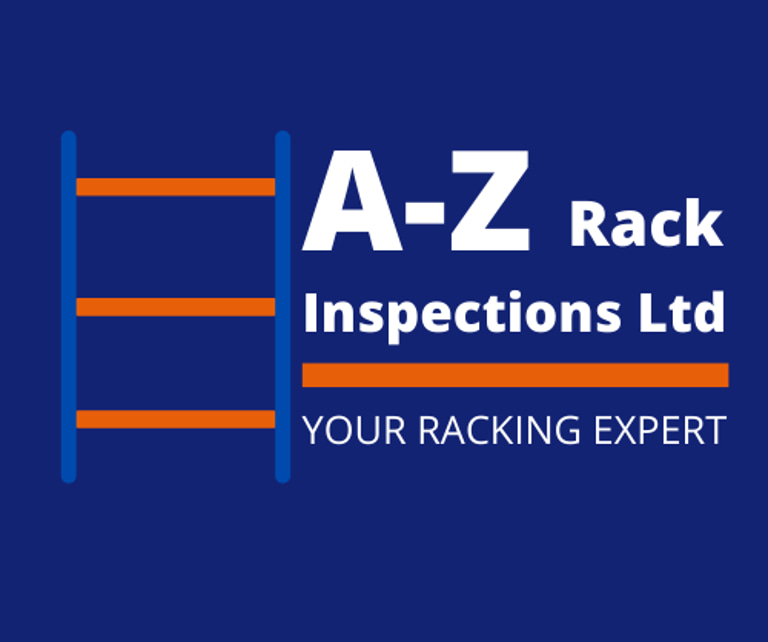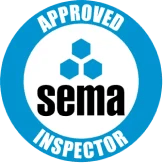
How Often Should You Inspect Racking?
Need a Annual Racking Inspection by our SEMA Approved Racking Inspectors? Trust A-Z Rack Inspections Ltd - Call 07917 664940 or 07947 886161 today!!


How Often Should You Inspect Warehouse Racking?
Ensuring warehouse racking safety is essential for protecting employees, inventory, and overall operations. While racking systems may appear stable and durable, they are constantly exposed to forklift impacts, overloading, and general wear and tear, all of which can weaken their structural integrity. Without regular racking inspections, minor damage can escalate into serious safety hazards, leading to collapses, injuries, and costly downtime.
So, how often should racking be inspected to comply with safety regulations and prevent accidents? Let’s break it down.
Why Routine Racking Inspections Are Crucial
In the UK, the logistics and warehousing sector employs over 2.7 million people, making workplace safety a top priority. Pallet racking is classified as work equipment under the Provision and Use of Work Equipment Regulations (PUWER), meaning it must be regularly maintained and inspected to meet legal safety standards.
Even if racking looks stable, small, unnoticed damage—such as a forklift bump or incorrect loading—can compromise its load-bearing capacity. Without proper inspections, this can lead to:
❌ Racking collapses, putting workers at risk of injury or fatality.
❌ Damaged inventory, resulting in financial losses.
❌ Operational disruptions, causing costly delays.
❌ Non-compliance fines, for failing to meet HSE and SEMA safety regulations.
To prevent these risks, warehouses must implement a structured inspection routine at three key levels: daily, weekly, and annually.
1. Daily Visual Checks by Warehouse Staff
📌 Who Should Conduct Them? All warehouse employees.
📌 What to Look For? Visible damage, misaligned racks, loose beams, or missing safety pins.
📌 Why They Matter? Encourages a proactive approach to safety, allowing early detection of potential hazards.
Since pallet racking is in constant use, damage can occur at any time. Encouraging employees to report any visible issues immediately helps prevent small problems from escalating.
Best Practice: Implement a damage reporting system where workers can log any concerns. This ensures issues are documented and addressed promptly.
2. Weekly Racking Inspections by a PRRS
📌 Who Should Conduct Them? A Person Responsible for Racking Safety (PRRS) within the warehouse team.
📌 What to Check?
✅ Structural damage to beams, uprights, and braces.
✅ Signs of overloading, improper stacking, or unsecured loads.
✅ Missing safety components (e.g., locking pins or beam connectors).
✅ Forklift impact damage or bent frames.
📌 Why They Matter? Regular monitoring helps catch minor issues early, reducing repair costs and safety risks.
The HSE HSG76 Warehouse Safety Guidelines recommend appointing a PRRS—a trained team member responsible for weekly racking safety checks. Their role is to identify, document, and escalate safety concerns before they become critical.
💡 Did You Know? Businesses that implement a PRRS reduce racking-related incidents by up to 80% compared to those without one.
3. Annual Expert Racking Inspections by a SEMA Approved Inspector (SARI)
📌 Who Should Conduct Them? A SEMA Approved Racking Inspector (SARI).
📌 What to Expect?
✔️ A detailed assessment of structural integrity and compliance with UK safety regulations.
✔️ A traffic light risk classification system to prioritise repairs:
🟢 Green – Safe but monitor
🟠 Amber – Requires corrective action soon
🔴 Red – Immediate danger, must be repaired or unloaded immediately
📌 Why They Matter? Ensures full compliance with PUWER, HSE, and SEMA safety standards and provides expert recommendations for racking maintenance.
SEMA (Storage Equipment Manufacturers Association) has been the leading authority on racking safety for over 50 years. Their inspections ensure warehouses meet the highest industry safety standards, reducing liability and improving workplace security.
💡 Failure to comply with safety regulations can lead to fines, legal action, and serious workplace injuries. Investing in annual racking inspections is not just a legal requirement—it’s essential for business continuity.
The Benefits of Regular Racking Inspections
✔️ Reduces warehouse accidents – Ensures workplace safety for employees.
✔️ Minimises costly repairs – Catching minor damage early prevents major failures.
✔️ Protects inventory & equipment – Reduces the risk of stock damage.
✔️ Improves operational efficiency – Avoids downtime due to preventable incidents.
✔️ Ensures legal compliance – Meets UK health and safety regulations.
Conclusion: How Often Should You Inspect Racking?
To maintain warehouse safety and compliance, follow this structured inspection routine:
📅 Daily – Employees report visible damage immediately.
📅 Weekly – A PRRS conducts routine racking inspections and logs potential risks.
📅 Annually – A SEMA Approved Racking Inspector (SARI) performs a full compliance check.
By implementing this proactive inspection strategy, warehouses can prevent accidents, reduce downtime, and maintain a safe, efficient working environment.
📞 Need a Professional Racking Inspection?
Contact A-Z Rack Inspections Ltd today!
📍 Phone: 07947 886161 or 07917 664940
📍 Email: sales@a-zrackinspections.co.uk
Stay compliant, stay safe, and protect your warehouse with expert racking inspections!
Request a Racking Inspection Quote:
Get a Quote
With over 25 years of experience, our SEMA Approved Racking Inspectors offer nationwide racking inspection and training.


